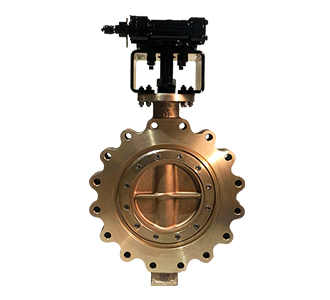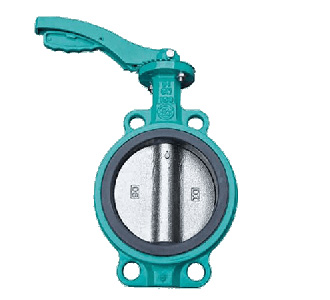What is a Lug Type Butterfly Valve?
Lug-style butterfly valves usually comprise a metal such as ductile iron or steel. They feature threaded tapped lugs positioned on the valve flanges for bolt connections.

What is a Wafer Type Butterfly Valve?
A wafer butterfly valve’s function is to retain a seal to protect against dual-directional pressure differential in fluid flow. In other words, the wafer version of butterfly valves was designed to hold a tight seal, safeguarding against a bi-directional pressure differential to avoid any backflow in systems manufactured for uni-directional flow. This is accomplished by using a tightly fitted seal, such as an O-ring, gasket, or precision machined, along with a flat valve face on the downstream and upstream sections of the valve.

Wafer vs Lug
Wafer Type Butterfly Valve
- Lighter
- Cheaper
- Easy installation
- Pipe flanges required
- More difficult to center
- Not suitable as an end valve
In the case of a Wafer-style butterfly valve, the body is annular with a few non-tapped centering holes. Some Wafer types have two, while others have four.
Lug-type Butterfly Valve
- Suitable as an end valve
- Easier to center
- Less sensitive in case of large temperature differences
- Heavier with larger sizes
- More expensive
Lug vs Wafer
In the case of a Wafer-style butterfly valve, the body is annular with a few non-tapped centering holes. Some Wafer types have two, while others have four.
The flange bolts are inserted through the bolt holes of the two pipe flanges and the centering holes of the butterfly valve. The pipe flanges are pulled towards each other by tightening the flange bolts, and the butterfly valve is clamped between the flanges and held in place.
In the case of a Lug-style butterfly valve, there are so-called “ears” over the entire circumference of the body into which threads are tapped. This way, the butterfly valve can be tightened against the two pipe flanges using 2 separate bolts( one on each side).
Because the butterfly valve is attached to each flange on both sides with separate, shorter bolts, the chance of relaxation through thermal expansion is smaller than with a Wafer-style valve. As a result, the Lug version is more suitable for applications with large temperature differences.
Butterfly Valve Lug vs Wafer
The wafer-style valve usually has two or four unthreaded holes to secure and align the valve within two mating flanges. The lug style has threaded holes that allow the user to take off one end of the line without affecting the opposite side, as it is held securely against one flange with bolts that match the threaded lugs on the valve. This makes it easier to clean, inspect, repair, or replace other sections of pipework, as there is no need to shut down the whole system.












